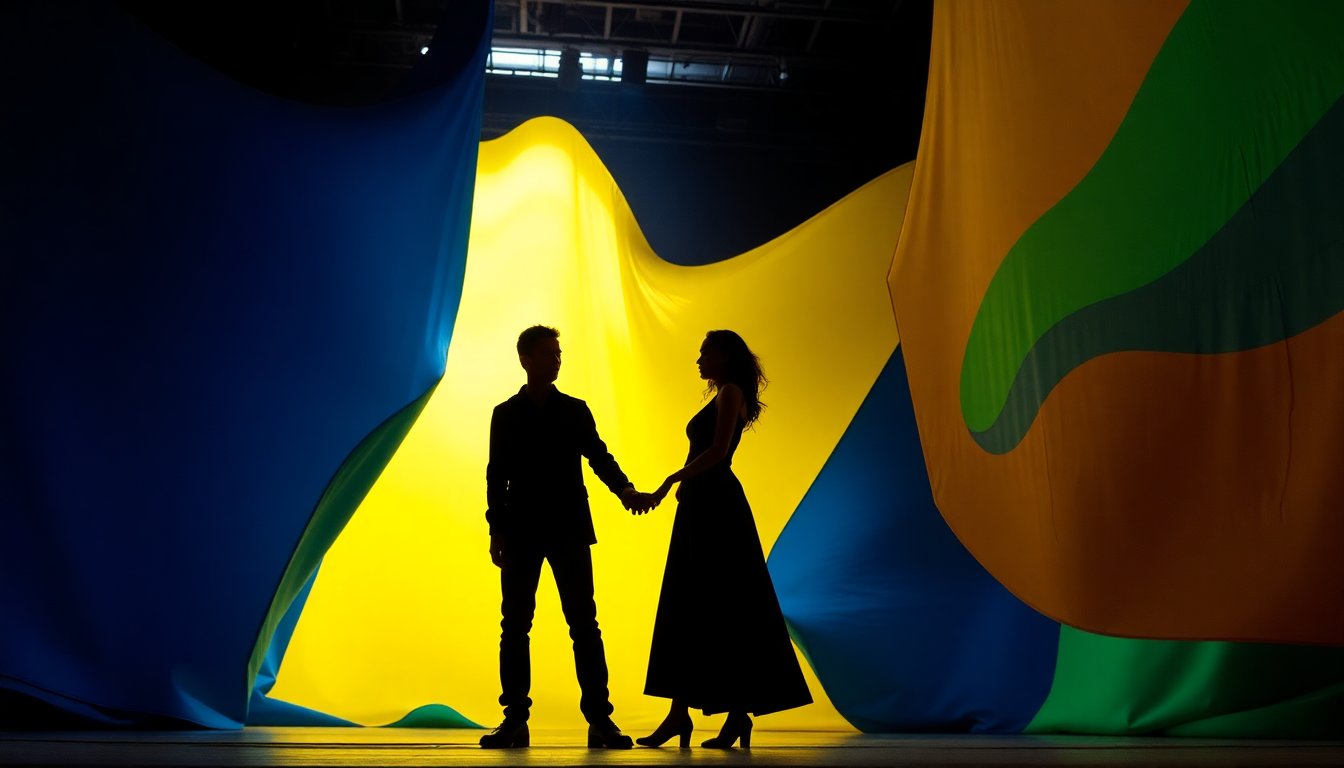Table of Contents
In a bold reinterpretation, director Jamie Lloyd unveils a fresh vision of Samuel Beckett’s iconic play, Waiting for Godot. Departing from the traditional bleak landscape, Lloyd enriches the production with a vibrant and expansive aesthetic. This revival has elicited diverse reactions, particularly due to its star-studded cast featuring renowned actor Keanu Reeves alongside his longtime friend Alex Winter.
While Lloyd is known for reimagining classic works, his approach in this production stands apart from his previous efforts, such as A Doll’s House and Evita. The omission of the familiar solitary tree from the original script signifies a broader shift in focus, as the director invites audiences to confront the absurdity and existential dread central to Beckett’s message.
Star power and character dynamics
The revival’s appeal is significantly enhanced by the presence of Keanu Reeves, making his Broadway debut in a compelling performance as Gogo. Reeves captures a blend of vulnerability and bewilderment, portraying a character seemingly lost in a surreal landscape. His disheveled appearance and expressive body language effectively convey the essence of a man ensnared in a cycle of despair and confusion.
In contrast, Alex Winter embodies the role of Didi, presenting a character who showcases resilience alongside a sense of futility. Didi’s commitment to waiting for the elusive Godot serves as a poignant reflection on hope and perseverance, even when confronting life’s harsh realities. The dynamic between the two actors appears natural, rooted in their long-standing friendship, although their chemistry occasionally leans towards a more relaxed and less urgent energy.
Visual and thematic elements
The set design by Soutra Gilmour features a striking spiral structure that envelops the stage. This design symbolizes a cosmic journey or a pathway to the unknown, providing a visually captivating backdrop that prompts audiences to contemplate the play’s deeper themes. The lighting, skillfully crafted by Jon Clark, enhances the atmosphere, illuminating the space while maintaining an underlying sense of dread.
Although the visuals are bright, the essence of Beckett’s work is preserved. The existential themes resonate with the audience, presenting the characters’ struggles in a new light. Lloyd’s interpretation encourages viewers to reflect on the nature of waiting and the human condition, drawing connections to contemporary issues of uncertainty and disillusionment.
Supporting characters and their impact
In addition to the central duo, the production features Brandon J. Dirden as the self-important Pozzo and Michael Patrick Thornton as his nearly mute servant, Lucky. Dirden’s portrayal injects a vibrant energy into Pozzo, whose bombastic personality sharply contrasts with Lucky’s silent suffering. This dynamic offers insight into power relationships, although some staging choices may obscure the play’s original commentary on servitude.
Thornton navigates the role of Lucky from a wheelchair, delivering a stunning performance, particularly during his lengthy monologue. His portrayal highlights the character’s inner turmoil, adding significant depth to the narrative. However, the relationship between Pozzo and Lucky, crucial to the play’s exploration of domination and dependency, sometimes feels muddled due to the direction.
A modern interpretation
Modern take on Beckett’s classic resonates with audiences
The characters in this production confront their existential dilemmas, prompting audiences to reflect on their own lives through the lens of Samuel Beckett’s enduring themes. The use of contemporary references, coupled with the easy rapport between actors Reeves and Winter, may elicit mixed reactions from traditionalists. However, these elements add a fresh perspective to the performance.
Lloyd’s interpretation of Waiting for Godot underscores the ongoing relevance of the search for meaning and connection. Didi’s poignant observation that “the essential doesn’t change” highlights that, despite a world filled with uncertainty, the quest for purpose remains a shared human experience. This production, while innovative, still resonates with Beckett’s original vision, offering a significant experience for both newcomers and long-time fans.


